2019
تاريخ السينما والتحليل السينمائي مع La Femis Academy - المسار الثاني
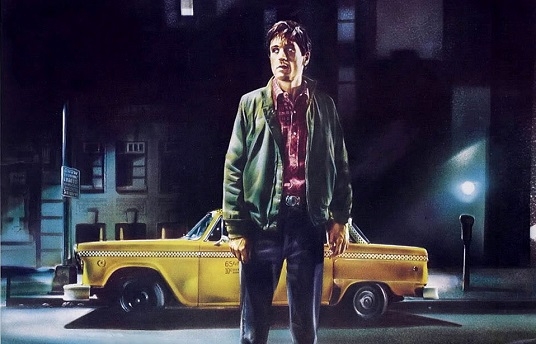
- تاريخ الإبتداء:
- 2019 ديسمبر 08
- مستوى الكفاءة:
- Unspecified
بالتعاون مع جامعة لافيميس، والمعهد الفرنسي في قطر، والسفارة الفرنسية في الدوحة، وفناك، و فيفتي ون إيست.
المسار الثاني: 8-13 ديسمبر 2019
في المسار الثاني من هذه النظرة الآسرة إلى التطور التاريخي لصناعة الأفلام والسينما، سنزاوج مرةً أخرى بين التحليل السينمائي المتعمّق والتدريب الأكاديمي مصطحبين المشاركين في رحلةً من الأيام التكوينية الأولى للسينما إلى ما أصبحت عليه اليوم من وسط فنيٍّ معاصر.
ستتعلّم في هذا المسار ، سواءً أكنت قد أخذتها بصورةٍ منفصلة أو كامتدادٍ مهمٍّ جداً للمسار الأول:
- تاريخ السينما مع التركيز على هذه الفترة الهامة من تاريخها.
- الإحاطة ببعض المصطلحات المتعلّقة بصناعة الأفلام.
- تحليل الأفلام ودراسة أساسيات منهجيتها.
- توسيع مدارك معرفتك بصناعة الأفلام.
يناسب هذا المسار من يدرسون السينما، ومحبي الأفلام، والعاملين المحترفين في هذا المجال الذين يبحثون عن تعزيز رصيدهم الأكاديمي. المقاعد محدودة، لهذا احرص على حجز مقعدك كي لا يخيب أملك لاحقاً.
آخر موعد للتقديم: 17 نوفمبر 2019
الفترة: 8-13 ديسمبر 2019
الساعات:
الأحد إلى الخميس، 5:00-10:00 مساءً
الجمعة، 2:00-7:00 مساءً
اللغة: الإنجليزية
عدد المشاركين: 15-20 مشارك
السعر: 1000 ريال قطري*
*سيحصل أعضاء “بطاقتك إلى الثقافة” على خصم بنسبة 10% على سعر هذه الورشة. للاستفادة من هذا الخصم، يرجى إضافة صورة من بطاقتك عند التقديم للورشة.
شروط التقديم
يُرجى إرسال الوثائق التالية في ملف واحد (بصيغة وورد أو PDF) إلى البريد الإلكتروني training@dohafilminstitute.com في موعد أقصاه 17 نوفمبر، مع اسمك الكامل وبريدك الإلكتروني ورقم هاتفك.
- رسالة نوايا مختصرة تشرح فيها لماذا تريد التقديم إلى هذه الورشة (لا يتجاوز طولها صفحة واحدة)، مع تحديد المسار الذي تود المشاركة فيه (المسار الأول، أم الثاني، أم كليهما). يجدر الذكر أننا نوصي المشاركين بحضور كلا المسارين، إذا كان ذلك ممكناً، لتحصيل الفائدة كاملة.
- الأعمال السابقة أو بورتفيليو فني (إن وجد).
- سيرتك الذاتية (CV أو Biography)
- البرنامج مفتوح لجميع المواطنين والمقيمين في قطر. يُرجى على المتقدمين إرفاق صورة لهويتهم القطرية مع طلب التقديم.
يُرجى العلم أن إرسال الوثائق السابق ذكرها لا يضمن لكم القبول طلبكم للمشاركة في هذا المسار. سيتم إعلام المتقدمين بقرار قبولهم في وقت مناسب بعد انتهاء فترة التقديم.
المسار الثاني، 8-13 ديسمبر 2019
اليوم الأول: النيوواقعية الإيطالية (Italian Neo-Realism)
تركت الحرب العالمية الثانية أثراً فارقاً على معظم الأعمال السينمائية في أوروبا. فقد أخذت الحرب برؤى المخرجين في صناعة الأفلام إلى مناحي جديدة لمّا كانوا حريصين على الترفع عن التقنيات التي استخدمها الدعاية الفاشية. وكانت إيطاليا هي مكان ميلاد إحدى أبرز هذه الحركات.
المواضيع التي سيتم تناولها:
- النتاج السينمائي خلال الحرب.
- دراسة هذه الحركة (فيسكونتي، روسيليني، أنتونيوني، باسوليني، دي سيكا، فيليني).
الأفلام التي سيتم دراستها: “The Bicycle Thief” لمخرجه فيتوريو دي سيكا (1948)، و“Rome, Open City” لمخرجه روبيرتو روسيليني (1945)، و“Obsession” لمخرجه لوتشينو فيسكونتي (1943).
اليوم الثاني: آثار الحرب على السينما الأمريكية
خلّفت الحرب تداعياتٍ واسعة كان لها أثرها على السينما الأمريكية، وتمثّل أهمها في موضوع الهجرة.
المواضيع التي سيتم تناولها:
- الألوان السينمائية التي ظهرت في ذاك الوقت.
- التغيرات التي طرأت على ألوانٍ سينمائيةٍ كان لها وجودها مثل الويستيرن
- انبثاق الحداثة مع دراسة تأثير مخرجين كبيرين – صانع أفلامٍ أمريكي وآخر بريطاني – أوروسون ويلز وألفريد هيتشكوك.
الأفلام التي سيتم دراستها: “Citizen Kane” لمخرجه أورسون ويلز (1940)، و“The Rear Window” لمخرجه “آلفريد هيتشكوك” (1954)
اليوم الثالث: الموجة الفرنسية الجديدة (French New Wave)
المواضيع التي سيتم تغطيتها:
- الموجة الفرنسية الجديدة في ضوء تأثير الحداثة الأمريكية والنيوواقعية الإيطلاية.
- السينما والنقاد عبر مجلة ‘Les Cahiers du cinéma’ التي لاقت صيتاً واسعاً على يد العديد من مخرجي الموجة الفرنسية الجديدة.
الأفلام التي سيتم دراستها: “Breathless” لمخرجته جين-لو جودارد (1959) و“The 400 Blows” لمخرجه فرانسيوس تروفاوت (1959).
اليوم الرابع: هوليوود الجديدة
المواضيع التي سيتم تغطيتها:
- أثر سينما الموجة الجديدة في أمريكا على صناع الأفلام الأمريكيين، من كاسافيتس وسكورسيزي إلى دي بالما.
- السينما الأمريكية والحرب الفيتنامية.
الأفلام التي سيتم دراستها: “Shadows” لمخرجه جون كاسافيتز (1959)، و“Easy Rider” لمخرجه دينيس هوبر (1969)، و“Apocalypse Now” لمخرجه فرانسيس فورد كوبولا (1979).
اليوم الخامس: سينما ما بعد الحداثة في فرنسا
سنتوجه في يومنا قبل الأخير من المسار الأول إلى إلقاء نظرة فريدة على الموقع المثير للاهتمام الذي كانت فيه السينما بين الحربين العالميتين.
المواضع التي سيتم تغطيتها:
- ظهور المخرجين الفرنسيين الجدد نهاية الثمانينات وبداية التسعينات مثل كلير دينيس، ولوك بيسون، وليوس كاراكس.
- المواضيع التي تطورت في هذه الابتكارات السينمائية الجديدة.
الأفلام التي سيتم دراستها: “Trouble Every Day” لمخرجته كلير دينس (2002)، و“Nikita” لمخرجه لوك بيسون (1990).
اليوم السادس: السينما المعاصرة
المواضيع التي سيتم تغطيتها:
- الأسماء الهامة في السينما الفرنسية المعاصرة.
- صعود نوعٍ جديدٍ من الألوان الفنية – الأفلام المتقاطعة “Crossover Movies” – التي تجمع صوراً سينمائيةً وسردياتٍ وبنىً من ألوانٍ سينمائيةٍ مختلفة.
الأفلام التي سيتم دراستها: “Raw” لمخرجته جوليا دوكورنيو (2016)، و“The Girl Without Hands” لمخرجه سيباستيان لودينباك (2018).
موجه الورشة
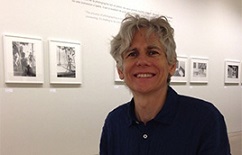
مارتين بارنير
مارتين بارنير هو بروفيسور يدرّس تاريخ السينما في جامعة لومير ليون2 منذ عام 1997. ويختص بارنير في تاريخ الأصوات، وأفلام السير، والبهرجة السينمائية (Spectatorship) والـ3-D في الأفلام. نشر بارنير عدداً من الأعمال منها “Bruits, cris, musiques de films’;’Les Projections Avant 1914”“ (2010) بالتعاون مع كيرا كيتوسباندو و“Le Cinéma 3-D Histoire, économie, technique, esthétique” (آرماند كولين، 2015) بالتعاون مع إل جولير، و“Une bréve Histoire de cinema’ (1895-2015)” (بلوريل، 2017)، وعمل وحده على نشر “Les Lumiéres de la Ville – Charlie Chaplin” (ريزاو كانوبي، 2017). عمل البروفيسور بارنير أيضاً بصفة عالم زائر في جامعة كاليفورنيا في سان دييغو (حيث درّس هناك بالإنجليزية)، وجامعة فلومينزي في ريو دي جانيرو (حيث درّس هناك بالإسبانية). وكان مساعد تدريس أيضاً لعام واحد في جامعة أيوا (حيث درّس هناك بالإنجليزية) في مسار تاريخ السينما الأوروبية.
نبذة عن لا فيميس
تأسس المعهد الفرنسي الوطني لا فيميس في عام 1986، ويرأسه حالياً المخرج الحائز على الجوائز راؤول بيك. يختار المعهد ويدرب كل عام خمسين طالباً من مختلف مجالات صناعة الأفلام. واختير بعض من الأفلام الاستثنائية التي صُنعت في إطار برامج المعهد للمشاركة في عديد من المهرجانات السينمائية، ومنها كان وبرلين وكليرمونت فيراند حيث حازت منها على جوائز. ومعهد لا فيميس أحد أفضل عشر معاهد سينما في العالم وفق موقع ومجلة “The Hollywood Reporter”.
تقدم هذه الورشة بالتعاون مع
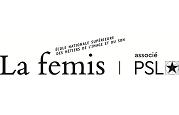 |
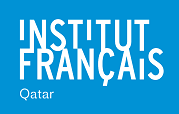 |
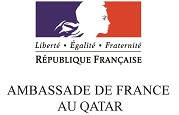 |
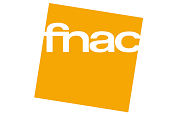 |
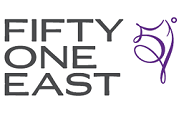 |